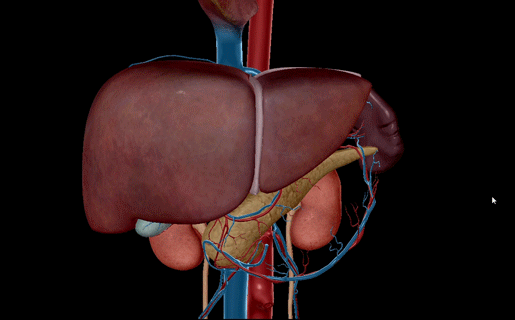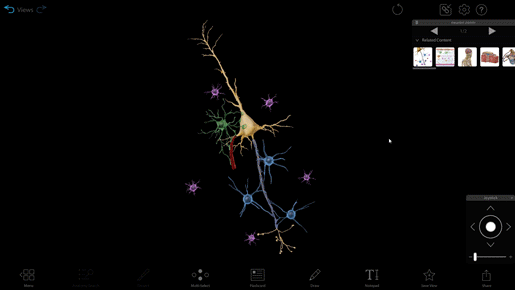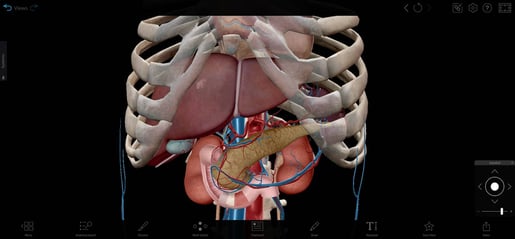Visible Booze: How Alcohol Affects the Body
Posted on 6/23/23 by Sarah Boudreau
Alcohol is one of the world’s most popular drugs—over 60% of American adults reported drinking alcohol in 2022. Alcoholic beverages are pervasive in our culture, but what does it actually do to our bodies?
In this blog post, we’ll go through the basics of alcohol’s effects on the body, from metabolization to the long-term effects of heavy drinking.
How the body processes alcohol
When you have an alcoholic beverage, the body gets to work absorbing and metabolizing the alcohol. The amount of alcohol present in your bloodstream, aka your blood alcohol concentration or BAC, depends on factors like:
- How full your stomach is. Food—carbohydrates especially—slows down absorption.
- The concentration of alcohol in the drink. Drinks that are 20-30% alcohol absorb the fastest.
- The menstrual cycle. Blood alcohol concentration is highest at the premenstrual and ovulation phases.
- The type of drink. Bubbly beverages like champagne are absorbed quicker.
BAC hits its peak about an hour after the drink is consumed on an empty stomach. It’s then steadily removed from the blood.
After it’s absorbed into the blood, alcohol is pretty evenly distributed throughout the body, except for the liver. The liver is responsible for over 90% of alcohol elimination, while the rest is excreted in breath, urine, and sweat. Blood from the stomach and small intestine enters the liver through the portal vein.

GIF of hepatic portal vein from Visible Body Suite.
From there, enzymes in the liver break down alcohol. Alcohol dehydrogenases oxidize alcohol into acetaldehyde, a toxin. Then, aldehyde dehydrogenases oxidize acetaldehyde into acetate, which is a harmless substance. In the liver and surrounding tissues, acetate is oxidized into carbon dioxide and water.
There are several aldehyde dehydrogenase isoenzymes, and people carry different variations of the enzymes depending on genetics. About 40% of people of East Asian descent have a form of the enzyme ALDH2 that is less active than others, leading to increased headaches, nausea, tachycardia, and a flushed face due to a buildup of acetaldehyde.
Alcohol’s immediate effects
Alcohol has a number of effects on the body. Let’s go through a few!
Alcohol is a depressant, slowing down the brain. GABA is a neurotransmitter that slows down nerve transmission, and alcohol binds to its receptors and increases the effects of GABA. Alcohol also slows down glutamate, a neurotransmitter that increases brain activity. Because alcohol slows down the brain’s communication functions, it becomes difficult to think clearly and coordination is impaired.

The neuron model in Visible Body Suite.
Alcohol inhibits NMDA receptors, which are responsible for synaptic plasticity (how neurons change the strength of their connections) and are tied to memory. When you drink alcohol, the hypothalamus is stimulated, releasing sympathomimetic amines and pituitary-adrenal hormones. This leads to an increase in blood pressure as well as sweating, flushing, and tachycardia. Alcohol also triggers neurotransmitters like dopamine and serotonin, creating a feeling of relaxation and well-being.
Alcohol interferes with a plethora of other functions, leading to short-term effects like:
- Blurred vision
- Difficulty processing new information
- Short-term memory lapses and blackouts
- A loss of consciousness
- Impaired decision-making
- Balance problems
- Mood swings and difficulty regulating emotions
In addition, alcohol has an osmotic effect and slows down the secretion of antidiuretic hormones, leading the kidneys to secrete more urine.
Hangovers
About 75% of people who drink to intoxication will have a hangover the next day. Hangovers have a pretty broad definition; they’re basically defined as feeling awful after drinking.
What causes hangovers? That turns out to be a complicated question. There are many reasons why drinking alcohol would result in undesirable effects.
- Increased urine output can result in dehydration
- Alcohol’s effects on sleep quality can lead to fatigue
- Irritation of the gastrointestinal tract can cause vomiting and nausea
- Alcohol can throw off your electrolyte levels, causing headaches and irritability
- Alcohol reduces the body’s production of glucose, causing hypoglycemia (low blood sugar)
However, we aren’t sure exactly what causes hangovers. Acetaldehyde may be the culprit—before it is converted to acetic acid, it may circulate in the blood, causing these adverse effects. Remember ALDH2, the enzyme that doesn’t work as well in people of East Asian descent? That same group tends to suffer from more severe hangovers.
Another factor is congeners, byproducts of fermentation that give some alcoholic beverages a darker color and distinct flavors. Researchers have found that bourbon (which has a high concentration of congeners) gives worse hangovers than vodka (which has almost no congeners).

Red wine contains more congeners (like tannins) than white wine. Photo by Photo by Andrea Piacquadio via Pexels.
The delayed effect of a hangover may be caused by methanol, which is a congener present in small amounts in alcoholic beverages. The body begins by metabolizing ethanol, which produces acetaldehyde, and when it’s done it moves on to methanol. When methanol is metabolized, it turns into formaldehyde, another toxic substance that can cause hangover symptoms.
Alcohol and development
It’s important to remember that there is no “safe” amount of alcohol you can drink during pregnancy. When a pregnant person drinks alcohol, alcohol passes through the bloodstream into the fetus’ blood via the umbilical cord and causes disruptions in the fetus’ development.
Drinking while pregnant increases the likelihood of the child being born prematurely, with a birth defect, or with fetal alcohol spectrum disorder. Fetal alcohol spectrum disorders are a group of disorders, the most severe of which is fetal alcohol syndrome.
Children with fetal alcohol spectrum disorders may experience things like:
- Learning and intellectual disabilities
- Problems with vision or hearing
- A small head size
- Kidney, heart, and bone problems
- A shorter height than average
- Delays in speech and language development
- A low body weight
Alcohol consumption during adolescence can also affect development. Teenagers who drink heavily tend to have worse decision making, and their brains have to work harder to accomplish cognitive tasks. Gray and white brain matter both mature differently in adolescents who drink compared to non-drinking peers.
Long-term effects
Alcohol consumption is tied to several different kinds of cancer, mostly because of acetaldehyde, which is considered a probable carcinogen by the Environmental Protection Agency.
- Moderate drinkers are 1.8 times more likely to develop oral cavity and pharynx cancers than nondrinkers, and heavy drinkers are five times more likely to develop these cancers.
- Moderate-to-heavy drinkers have a 1.2-1.5 time increased risk of colorectal cancers.
- Heavy consumption of alcohol is associated with doubling the risk of liver cancers called hepatocellular carcinoma and intrahepatic cholangiocarcinoma.
Alcohol can cause harm to the body in many other ways, too. Because alcohol is metabolized mostly in the liver and pancreas, those organs get the brunt of the damage. Many heavy drinkers develop types of liver disease such as fatty liver, hepatitis, and cirrhosis. Alcoholic pancreatitis is not very common, affecting less than 10% of heavy drinkers, but it can irreversibly damage the pancreas. In fact, heavy drinking is one of the leading causes of acute pancreatitis.

The liver and pancreas metabolize the most alcohol out of any other organs. Image from Visible Body Suite.
Many people develop alcohol use disorder (AUD), which is also referred to as alcohol addiction, alcohol dependence, and/or alcohol abuse. As described in the Diagnostic and Statistical Manual of Mental Disorders, Fifth Edition, people with AUD have an impaired ability to control or stop consuming alcohol regardless of consequences. AUD can be treated through support groups, therapy, and even medications like Naltrexone, which blocks the effects of alcohol and can reduce cravings.
Read More
If you’re in the United States and you or a family member is struggling with alcohol, the Substance Abuse and Mental Health Services Administration runs a national hotline for individuals and families who face substance use disorders like AUD.
Want to read more about related anatomy, physiology, and pathology? Check out these blog posts!
- The Toxic Substance Treatment Plant: Liver Anatomy
- Learning the ABCs: What Is Viral Hepatitis?
- The Science of Snoring
Be sure to subscribe to the Visible Body Blog for more anatomy awesomeness!
Are you an instructor? We have award-winning 3D products and resources for your anatomy and physiology course! Learn more here.



